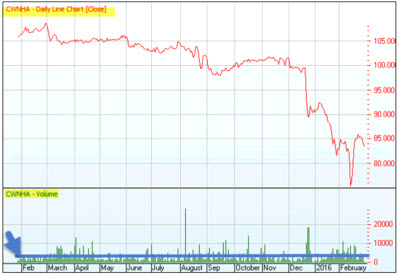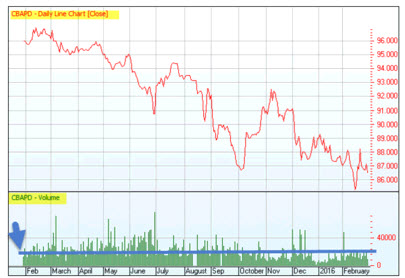Almost every other month, an Australian listed company raises new funding using hybrid securities. As a result, we provide a summary of our advice on the respective issue, to clients invested in that company’s shares and other securities.
We are yet to advise a client to invest in a new capital raising of hybrid securities.
Why?
First, let’s be clear what a hybrid security is. Banks in particular are required by regulation to hold a certain amount of what is known as Tier 1 Capital; amongst other things, in support of the loans and advances it makes to customers. Loans to clients are funded by deposits and other loans, and shareholder equity.
The Tier 1 Capital requirements seek to balance the risks inherent in lending, between shareholders and long term capital providers, and depositors. Poor credit / investment / risk management decisions on the part of bank management will be shared; firstly with long term capital providers and shareholders, and then by depositors.
Hybrid securities form part of Tier 1 Capital and generally speaking represent long-term funding which may be repaid or, under certain stress situations, convert into shares. They pay a distribution at a fixed margin above a reference rate, based on the issue price of the security – for example: a security with an issue price of $100, and a distribution comprising a margin of 5% over the prevailing 90 day bank bill swap rate (say 2%), will pay $7 per annum payable quarterly.
The distribution on the hybrid may or may not be paid – at the discretion of management (and possibly APRA in the case banks) – and are mostly not cumulative: meaning that there is no requirement for the issuer to “make up” previously unpaid distributions.
To clarify, hybrid securities are not deposits, are not shares, and are not bonds (otherwise known as fixed interest securities).
There are many types of hybrids, but most hybrids issued over the last few years have more equity characteristics than debt characteristics.
Retail investors here and in the UK have been warned by regulators to be extremely careful when investing in hybrid securities, as the securities are often not fully understood. Interestingly most institutional investors (read: professional and highly informed) have shied away from recent hybrid security issues, with the bulk of recent issuance being taken up by retail investors and self-managed superannuation funds.
Why the demand from private investors? As bank deposit rates have declined, retail investors have sought higher yielding securities for their income believing that:
- the margin set by the issuer is market related,
- income is substantially “guaranteed” (Australian Banks will ‘never fail’),
- the capital value of the security is not volatile like shares,
- the securities are liquid (can be sold at any time should the requirement arise), and
- income return takes precedence over total return (capital growth and income).
Market behaviour in relation to each of the above assumptions has shown:
- the margin on issuance is often not market related, resulting in the hybrid security trading below issue price on listing (thereby increasing the margin available to investors who have purchased these securities on the ASX after listing),
- whilst not guaranteed, distributions have been a steady, and stable, income stream. We are not aware of an issue made in the last 5 years on which distributions have not been met (past performance however is not a predictor of future performance),
- that the capital value of these securities is not as volatile as shares, but is volatile – and can significantly reduce or even eliminate the income earned on the security,
- the securities are not as liquid as related ordinary shares, with implications for large and small investors alike should there be large volumes of selling pressure (most likely when circumstances are turning negative for the outlook for the company itself).
If securities are sold when prices are below issue price, the realised capital loss can equate to the equivalent of many years of income.
2 Examples are:
- Crown Subordinated Notes – CWNHA, and
- CBA Perls VII – CBAPD
Source: ASX

Note the drop in price in 1 year from approximately $105 per security to
approximately $84 per security – a drop of 20%.
Note the relatively low volumes of daily trade. What happens if a large
investor wants to exit quickly?
Source: ASX

Note the drop in price in 1 year from approximately $100 per security to
approximately $86.50 per security – a drop of 13.5%.
Note the relatively low volumes of daily trade. What happens if a large
investor wants to exit quickly?
Finally, hybrid securities are normally included in a portfolio as a part of the defensive component of the portfolio. Defensive assets should play the role of being a volatility dampener to offset the volatility associated with investing in shares or growth assets, whilst contributing a modest sustainable return. As such, defensive assets should be low risk in nature. A diversified portfolio of Fixed Interest securities should on average deliver a negative annual total return once every 20 to 25 years.
The behaviour of bank hybrids shows the level of risk being taken on – often unwittingly – by retail investors and SMSF’s. By tilting the defensive part of the portfolio toward more risk, the overall risk profile of the portfolio can be magnified. Investors need to remember that risk and return are related. Returns are a function of capital + income not just one or the other.
For all of these reasons we have yet to recommend that a client participate in a new issuance of a hybrid security.
As a final consideration:
Just how much risk to the Australian residential property market is reasonable? After the typical high income or high net worth investor has invested heavily in their primary home and residential investment properties; a high proportion of their Australian equity portfolio in Australian banking stocks, and then an overlay of bank hybrids – what is plan B – if against all expectations residential property values decline materially?
